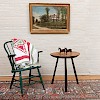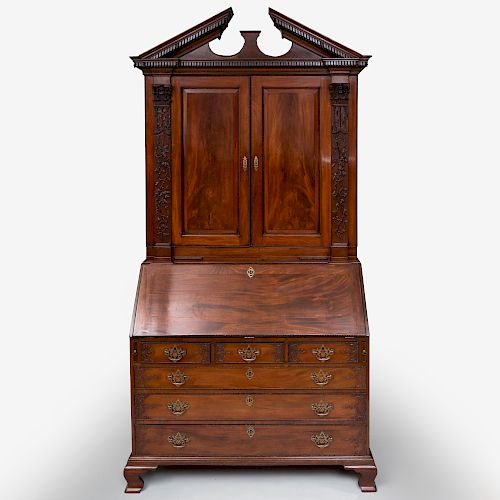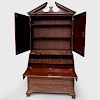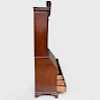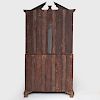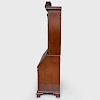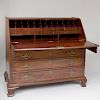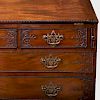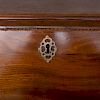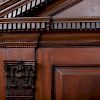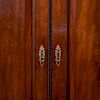Fine and Rare Chippendale Carved Mahogany Slant-Front Secretary Bookcase
Bid Increments
| Price | Bid Increment |
|---|---|
| $0 | $25 |
| $200 | $50 |
| $500 | $100 |
| $3,000 | $250 |
| $5,000 | $500 |
| $10,000 | $1,000 |
| $30,000 | $2,500 |
| $100,000 | $5,000 |
In two parts; the upper section with a broken pediment cornice with dental and acorn molding, above two cupboard doors with rope-molded edges, opening to two shelves and flanked by carved entwined prunus branches below Corinthian capital pilasters, above two candle slides; the lower section with a slant-front with rope-molded edges opening to a writing surface and fitted interior, above three short and three long graduating drawers, carved with prunus branches, raised on ogee bracket feet.
8 ft. 11 in. x 4 ft. 8 in. x 26 in.
Note: The wood samples from this desk have been confirmed by The Chipstone Foundation, in 1991, as follows: Case bottom is tuilp poplar, drawer blades and dust boards are red pine, brace of back of desk is spruce, back boards are white pine, underside of writing surface and drawer sides and bottoms are white oak. There is a small group of similarly carved pieces, one, a card table sold at Christie's, London, December 5, 1991, lot 110, The Samuel Messer Collection of English Furniture,Clocks and Barometers. A second example of an armchair in Percy MacQuoid, History of English Furniture, Lawrence and Bullen, Ltd, 1904, Volume 3 (The Age of Mahogany), pl. XIV a. And a third, a bureau table in a Shreve advertisement in Antiques, May 1944.
